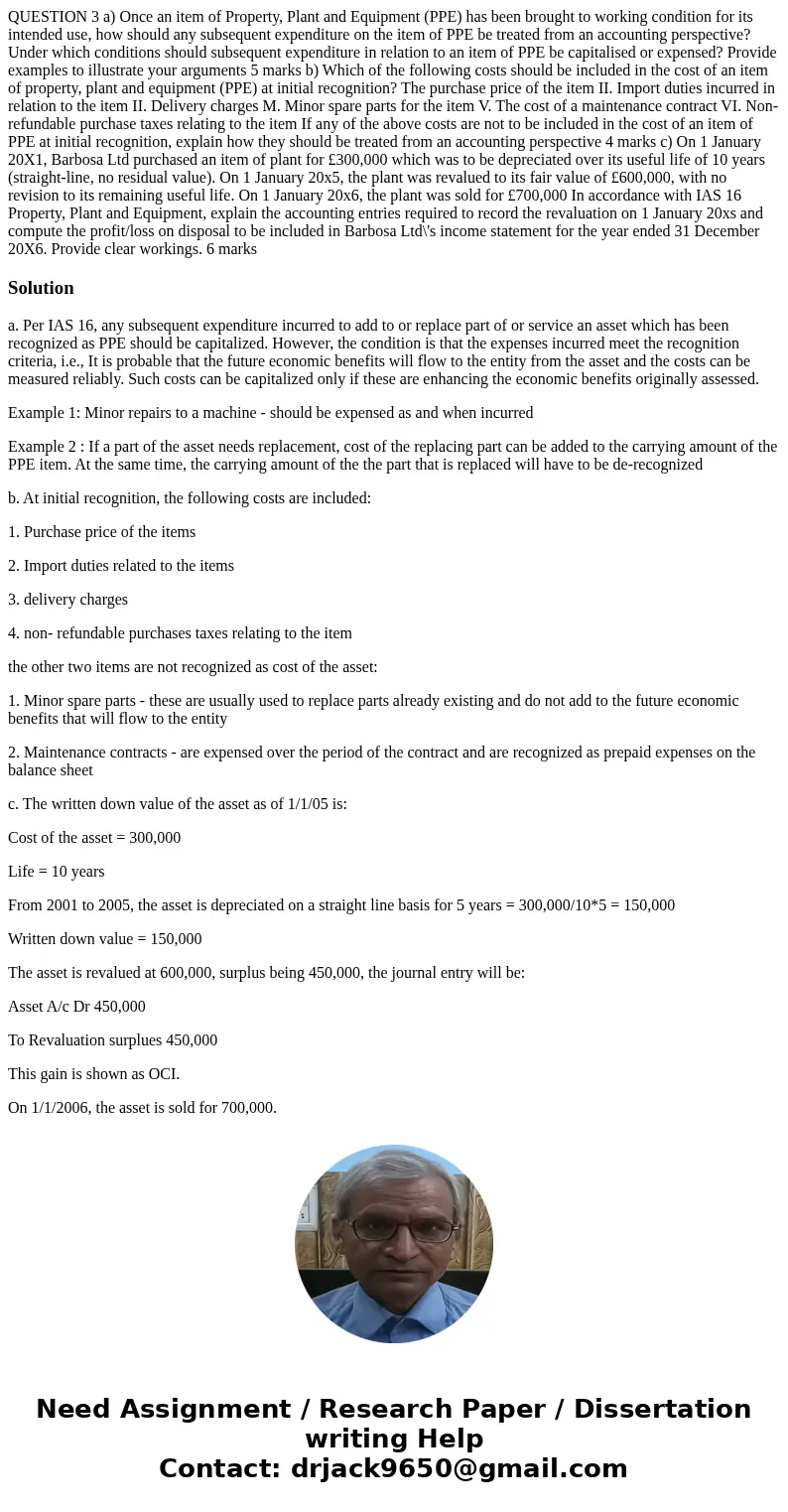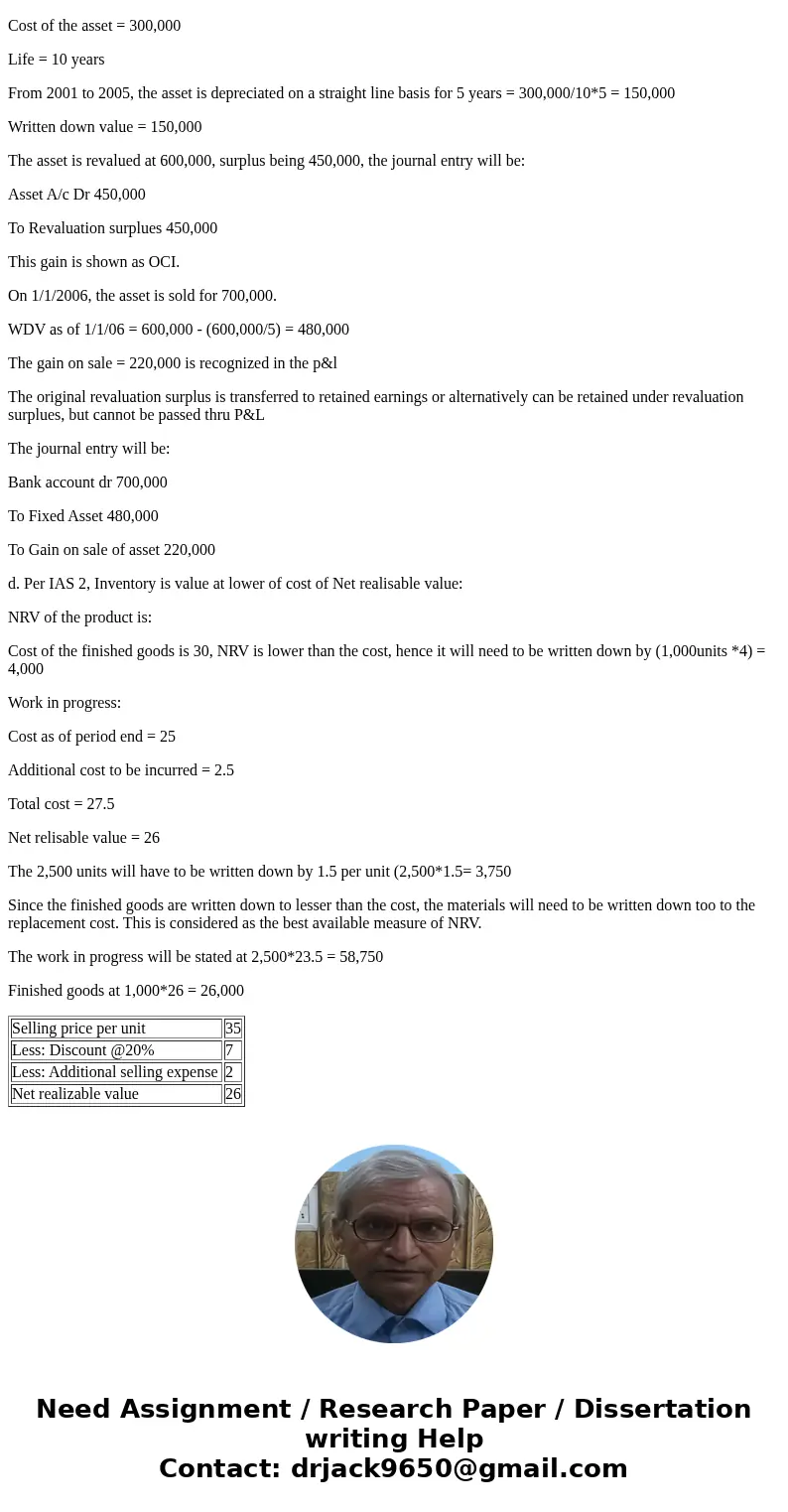QUESTION 3 a Once an item of Property Plant and Equipment PP
Solution
a. Per IAS 16, any subsequent expenditure incurred to add to or replace part of or service an asset which has been recognized as PPE should be capitalized. However, the condition is that the expenses incurred meet the recognition criteria, i.e., It is probable that the future economic benefits will flow to the entity from the asset and the costs can be measured reliably. Such costs can be capitalized only if these are enhancing the economic benefits originally assessed.
Example 1: Minor repairs to a machine - should be expensed as and when incurred
Example 2 : If a part of the asset needs replacement, cost of the replacing part can be added to the carrying amount of the PPE item. At the same time, the carrying amount of the the part that is replaced will have to be de-recognized
b. At initial recognition, the following costs are included:
1. Purchase price of the items
2. Import duties related to the items
3. delivery charges
4. non- refundable purchases taxes relating to the item
the other two items are not recognized as cost of the asset:
1. Minor spare parts - these are usually used to replace parts already existing and do not add to the future economic benefits that will flow to the entity
2. Maintenance contracts - are expensed over the period of the contract and are recognized as prepaid expenses on the balance sheet
c. The written down value of the asset as of 1/1/05 is:
Cost of the asset = 300,000
Life = 10 years
From 2001 to 2005, the asset is depreciated on a straight line basis for 5 years = 300,000/10*5 = 150,000
Written down value = 150,000
The asset is revalued at 600,000, surplus being 450,000, the journal entry will be:
Asset A/c Dr 450,000
To Revaluation surplues 450,000
This gain is shown as OCI.
On 1/1/2006, the asset is sold for 700,000.
WDV as of 1/1/06 = 600,000 - (600,000/5) = 480,000
The gain on sale = 220,000 is recognized in the p&l
The original revaluation surplus is transferred to retained earnings or alternatively can be retained under revaluation surplues, but cannot be passed thru P&L
The journal entry will be:
Bank account dr 700,000
To Fixed Asset 480,000
To Gain on sale of asset 220,000
d. Per IAS 2, Inventory is value at lower of cost of Net realisable value:
NRV of the product is:
Cost of the finished goods is 30, NRV is lower than the cost, hence it will need to be written down by (1,000units *4) = 4,000
Work in progress:
Cost as of period end = 25
Additional cost to be incurred = 2.5
Total cost = 27.5
Net relisable value = 26
The 2,500 units will have to be written down by 1.5 per unit (2,500*1.5= 3,750
Since the finished goods are written down to lesser than the cost, the materials will need to be written down too to the replacement cost. This is considered as the best available measure of NRV.
The work in progress will be stated at 2,500*23.5 = 58,750
Finished goods at 1,000*26 = 26,000
| Selling price per unit | 35 |
| Less: Discount @20% | 7 |
| Less: Additional selling expense | 2 |
| Net realizable value | 26 |


 Homework Sourse
Homework Sourse